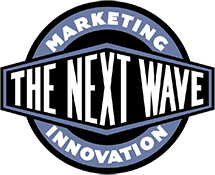As Google continues it’s march into personalization of search results, before long, online commerce sites will be paying for access to your social graph to predict what items show up on your landing page. It’s not far off from what Amazon does by studying your past purchases, comparing them with what others like you have bought and making recommendations. But, sure, we’re talking about online digital items, not physical stores, where moving the atoms around for a box of laundry detergent is a whole other matter right? Wrong.
Google is even trying to map the interiors of buildings now. Not only will they know how to direct you to the bathroom, but, they’ll be able to guide you to the box of Tide in aisle 9. Combine a few other retail technologies, like the electronic price/item labels on the gondola shelving and you could have the shelf label glow a special color as you near the vast selection of detergents.
And the funny thing is, this kind of tech doesn’t require Google glass, or massive changes in the way the systems are built- it just requires the graph to be allowed to grow. Some of this social engineering may make our lives easier, but, it may also start insulating us from having to choose, to make informed intelligent decisions. Others may think it will liberate us from the mundane tasks so as to go on to bigger and better ideas and move humanity to a higher level.
Another aspect of this connected world, might be a whole new world of point of sale advertising- or, comparison ads. The basics are already there on the shelf- if you look at a cost per ounce price for comparison, but imagine being given an option to review a competitors paid last ditch pitch on why you should convert brands? You’d get paid a small amount of store credit, to view the comparison and then choose. If you choose the competitors brand- it would be added to your graph, and next time, you’d be asked, last time you switched from Tide to Era, did you prefer the Era? And so your graph would continue to grow.
Big data may drive a lot of the suggestions, but in the end, it’s just consumers voting with their pocketbooks like they’ve always done, that will drive markets. Of course, when everyone’s connected, all the time, and suggesting and rating, and we have perfect access, the cycle of success or fail may be shortened.
Going back to the old “Pepsi Challenge”- where more people picked Pepsi when blind taste tests were done, sometimes consumers stick with a brand for purely emotional attachment no matter what. If you want to win in the store of the future, maybe the key is understanding how to build emotional attachment points into your product/brand/service that can’t be overrun by the data revolution.
